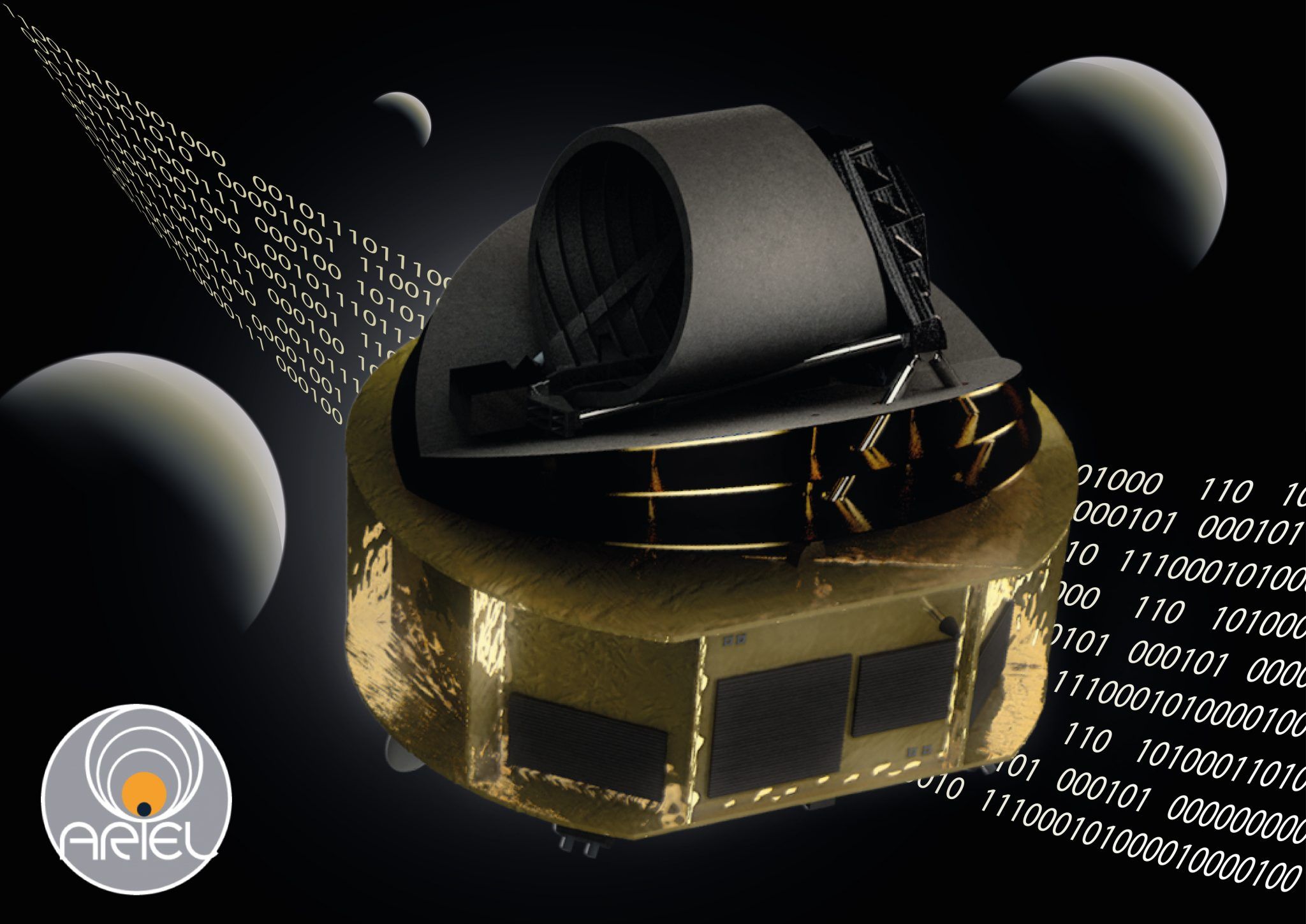Ariel’s Search For Extraterrestrial Life
Article by Giovanni Mussini November 30, 2020 (oxfordstudent.com)
• The European Ariel space telescope (Atmospheric Remote-sensing Infrared Exoplanet Large-survey) has been given the go-ahead for launch in 2029. Intended to map the atmospheres and chemical environments of distant exoplanets, the Ariel spacecraft’s search range will target hundreds of planets in the hotter Goldilocks zones in order to build a standard model of atmospheres based on the attributes of its host star and planetary environments.
• Different atmospheric components imprint distinctive patterns on the starlight beaming through. While not conducive to life itself, planets having an “atmospheric cauldron” that can circulate freely allows Ariel to capture more representative spectral signatures to create a standard model.
• The presence of unique ‘biosignatures’ arise due to the unique self-organizing properties of life. But at the same time, anomalies are unlikely to be spectacular or self-evident. Take Venus for example. Venus is a planetary inferno bathed in sulphuric acid rains, with a mean surface temperature high enough to melt lead. The biosignature of phosphine – a chemical created by living organisms – was detected in the cooler high-altitude Venusian clouds. But it is uncertain whether the presence of phosphine is due to biological activity, exotic abiotic chemistries, or a blip in the data.
• Time and again, attempts to map molecular pathways to life from simple organics have failed. Promising places – such as deep-sea hydrothermal vents – have proven an unlikely starting point for biology. The necessary interdependence of proteins, membranes, and nucleic acids may require simultaneous assembly, rather than in a stepwise fashion. Across the cosmos, the least unlikely places for spontaneous life to occur might be mineral-rich ephemeral pools bombarded by UV radiation. This is bad news for life. Temperate gas giants, oceanic super-Earths, and promising icy moons would all be ruled out. Perhaps biology really needs a planet like ours to get started: rocky, temperate, and tectonically active, with emerging landmasses. Places like these probably do exist, dotting the spiral arms of our galaxy.
• If the history of the Earth is any guide, evolution may rise to the challenges of alien worlds where there is living material to work from in the first place. Even on Venus, where balmy oceans existed as recently as 700 million years ago, life may have escaped the planet’s descent into a greenhouse nightmare by migrating to the higher atmosphere. As robotic emissaries and telescopic eyes return troves of data on far-flung worlds, sensational discoveries may come. But we are probably in for a long wait.
After years in the pipeline, the Ariel space telescope has been given the go-ahead for launch in 2029. This spacecraft is the brainchild of a cooperative European endeavour to map the atmospheres and chemical environments of far-flung worlds. If all goes well, Ariel will bring planetary science out of the solar system, and into uncharted territory. However, alien hunters may have to keep their enthusiasm in check – for now.
European endeavour to map the atmospheres and chemical environments of far-flung worlds. If all goes well, Ariel will bring planetary science out of the solar system, and into uncharted territory. However, alien hunters may have to keep their enthusiasm in check – for now.
Ariel will peer at a range of exoplanets, but its focus will be on worlds baked by their home stars at over 320 ºC. By all measures, these are extremely unlikely abodes for life. Even so, the detection technique available to Ariel makes them attractive targets.
 The telescope will search for faint chemical fingerprints as planets transit in front of their star. By only soaking up particular wavelengths, different atmospheric components imprint distinctive patterns on the starlight beaming through. The closer a planet is to its star, the more frequent the transits and the opportunities to carry out observations. Another perk of closely orbiting hellish worlds is that they wear their atmospheric makeup on their sleeve. Whereas gases may sink or coalesce into clouds on cooler planets, in an atmospheric cauldron they can circulate freely, allowing Ariel to capture more representative spectral signatures.
The telescope will search for faint chemical fingerprints as planets transit in front of their star. By only soaking up particular wavelengths, different atmospheric components imprint distinctive patterns on the starlight beaming through. The closer a planet is to its star, the more frequent the transits and the opportunities to carry out observations. Another perk of closely orbiting hellish worlds is that they wear their atmospheric makeup on their sleeve. Whereas gases may sink or coalesce into clouds on cooler planets, in an atmospheric cauldron they can circulate freely, allowing Ariel to capture more representative spectral signatures.
Ariel’s predecessors had to split their focus between probing exoplanetary atmospheres and other tasks. Instead, the ESA spacecraft will be solely dedicated to this endeavour, broadening the search to an unprecedented number of targets – hundreds of them. This is a cause for excitement. By gathering data en masse, Ariel will build towards something that has been sorely lacking in the quest for living worlds: a standard model of how atmospheres arise based on their host star and planetary environments. Understanding what is in line with this model, and what is not, may help scientists home in on genuine anomalies.
FAIR USE NOTICE: This page contains copyrighted material the use of which has not been specifically authorized by the copyright owner. ExoNews.org distributes this material for the purpose of news reporting, educational research, comment and criticism, constituting Fair Use under 17 U.S.C § 107. Please contact the Editor at ExoNews with any copyright issue.
